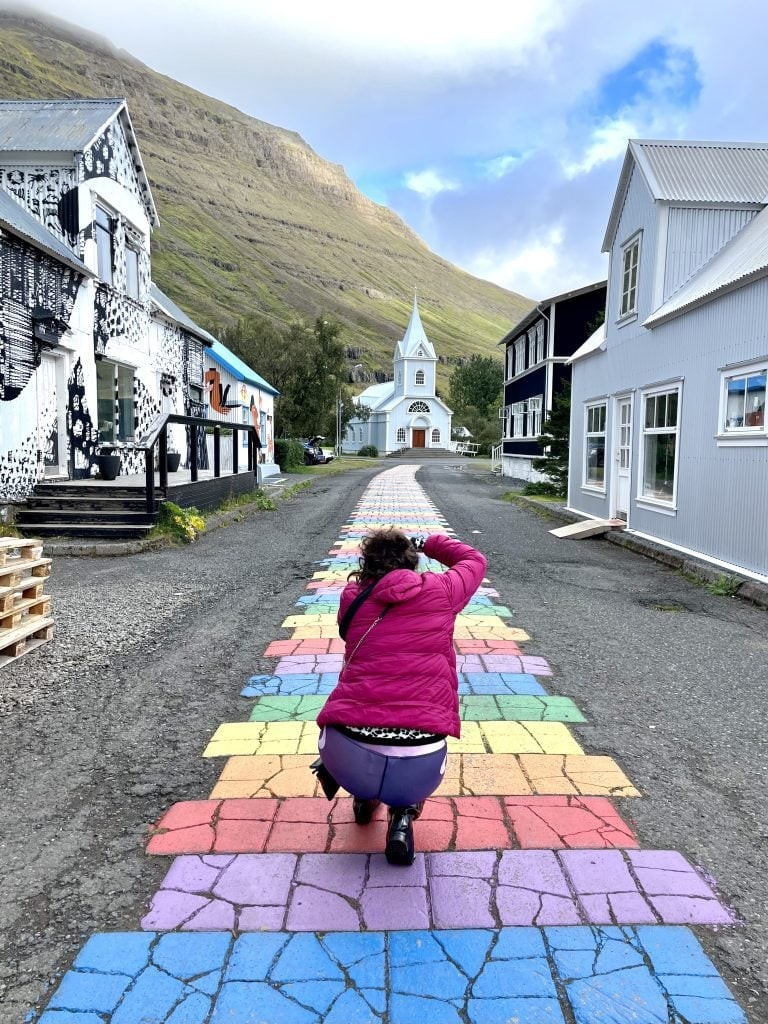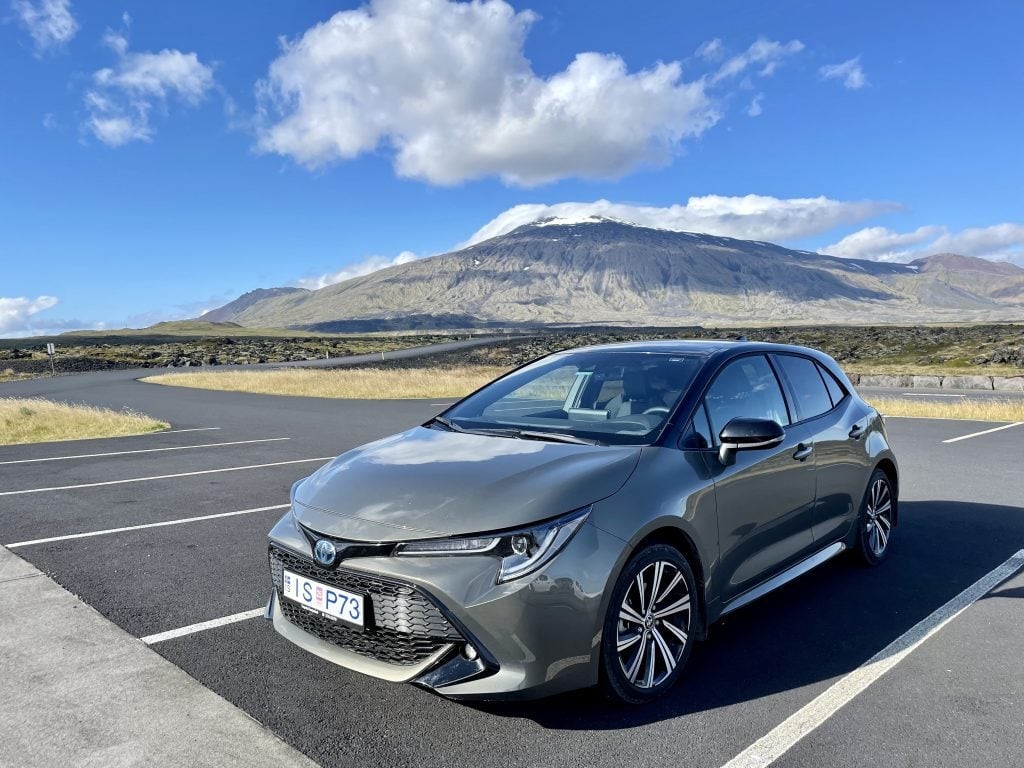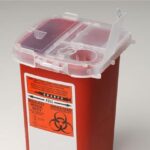Are you wondering, “Is Traveling To Iceland Expensive?” Yes, it absolutely can be. However, with careful planning and the right strategies, you can experience the breathtaking beauty of Iceland without breaking the bank. TRAVELS.EDU.VN is here to guide you through the ins and outs of budgeting for an unforgettable Icelandic adventure, ensuring you get the most value for your money while creating lasting memories. Discover affordable options, from accommodations to activities, and learn how to navigate Iceland’s costs effectively.
1. Understanding Iceland’s High Cost of Living
Iceland is notorious for being an expensive travel destination. But why is that? Several factors contribute to the higher prices you’ll encounter:
- Island Isolation: Iceland is a remote island nation, meaning most goods, including food and building materials, need to be imported. This increases the cost of everything from groceries to hotel construction.
- High Wages and Strong Economy: Iceland boasts a robust economy and high average wages, especially for unionized workers. This translates to higher prices for services, as labor costs are significant.
- Value-Added Tax (VAT): Iceland applies a relatively high VAT to goods and services, further increasing the final price for consumers.
- Tourism Boom: The increasing popularity of Iceland as a tourist destination in recent years has driven up demand, particularly during peak seasons, leading to price hikes in accommodation, tours, and transportation.
2. When to Travel: The Impact of Seasonality
The time of year you choose to visit Iceland can drastically affect your overall expenses:
- Summer (Mid-May to August): This is the peak tourist season, offering the most pleasant weather, longer daylight hours, and full access to all attractions and roads. However, it also comes with the highest prices for flights, accommodations, and rental cars.
- Shoulder Seasons (April-May & September-October): These months offer a sweet spot with fewer crowds, relatively good weather, and slightly lower prices compared to the summer months. Some attractions may have limited hours, so it’s important to check in advance.
- Winter (November to March): Winter in Iceland is a magical experience with opportunities to see the Northern Lights, explore ice caves, and enjoy winter sports. Prices are significantly lower than in summer, but be prepared for shorter daylight hours, potential road closures due to snowstorms, and limited access to some highland areas.
Table 1: Seasonal Cost Comparison
| Season | Flights | Accommodation | Rental Cars | Activities | Crowds |
|---|---|---|---|---|---|
| Summer | Highest | Highest | Highest | High | High |
| Shoulder Season | Moderate | Moderate | Moderate | Moderate | Medium |
| Winter | Lowest | Lowest | Lowest | Moderate | Low |
3. Setting a Realistic Daily Budget
To answer the question, “Is traveling to Iceland expensive?”, let’s look at daily budgets. A crucial step in planning your Iceland trip is to determine a realistic daily budget. This will depend on your travel style, accommodation preferences, and the activities you plan to pursue. Here’s a general guideline:
- Budget Traveler (€80-€150 per day): Camping, staying in hostels or budget guesthouses, cooking your own meals, utilizing public transportation or hitchhiking, and focusing on free activities like hiking and exploring natural attractions.
- Mid-Range Traveler (€150-€300 per day): Staying in comfortable guesthouses or budget hotels, dining at casual restaurants, renting an economy car, and participating in a mix of paid tours and free activities.
- Luxury Traveler (€300+ per day): Staying in upscale hotels or boutique accommodations, dining at fine-dining restaurants, renting a premium vehicle, and indulging in exclusive tours and experiences.
These are just estimates, and your actual spending may vary. Remember to factor in pre-trip expenses like flights and travel insurance.
4. Flights: Finding Affordable Airfare
Getting to Iceland can be a significant part of your overall budget. Here are some tips for finding affordable flights:
- Book in Advance: Generally, booking your flights several months in advance can help you secure better deals, especially if you’re traveling during peak season.
- Be Flexible with Travel Dates: Flying on weekdays or during the shoulder seasons can often result in lower fares. Use flight comparison websites to explore different date combinations.
- Consider Budget Airlines: Airlines like Play and Wizz Air often offer competitive fares to Iceland from Europe and North America. Be aware of extra fees for baggage and seat selection.
- Fly into Keflavík International Airport (KEF): This is Iceland’s main international airport, offering the most flight options and competitive prices.
5. Accommodation: Choosing the Right Option for Your Budget
Accommodation is another significant expense in Iceland. Here are some options to consider, ranging from budget-friendly to luxurious:
- Camping: The most affordable option, especially if you already own camping equipment. Iceland has numerous well-equipped campsites with facilities like restrooms, showers, and cooking areas. Wild camping is restricted in many areas, so be sure to use designated campsites.
- Hostels: A great option for solo travelers or those on a tight budget. Hostels offer dorm rooms and sometimes private rooms, along with communal kitchens and social areas.
- Guesthouses: A popular choice offering comfortable private rooms with shared or private bathrooms. Guesthouses often include breakfast and a personal touch from the hosts. Asahraun Guesthouse near Selfoss provides excellent value, with cozy amenities and a hot tub on site. Contact TRAVELS.EDU.VN for exclusive deals at Asahraun Guesthouse.
- Budget Hotels: Offering basic amenities and private rooms at a relatively affordable price. Be sure to read reviews carefully to ensure the hotel meets your standards.
- Apartment Rentals (Airbnb): A good option for families or groups seeking more space and self-catering facilities.
- Mid-Range Hotels: Providing a higher level of comfort and amenities, such as on-site restaurants and concierge services.
- Luxury Hotels: Offering premium accommodations, world-class dining, and exceptional service.
Remember that prices can vary significantly depending on the location and time of year. Booking well in advance is crucial, especially for popular areas like Lake Mývatn, which can be shockingly expensive.
Table 2: Accommodation Options and Average Prices (per night)
| Accommodation Type | Average Price (€) |
|---|---|
| Camping | 15-25 |
| Hostel Dorm | 30-50 |
| Guesthouse | 80-150 |
| Budget Hotel | 100-200 |
| Mid-Range Hotel | 200-350 |
| Luxury Hotel | 350+ |
6. Transportation: Getting Around Iceland Affordably
Exploring Iceland often requires renting a vehicle, but there are other options to consider:
- Rental Car: The most flexible option, allowing you to explore Iceland at your own pace. A 4×4 vehicle is recommended if you plan to venture into the highlands or travel during winter.
- Campervan: Combining accommodation and transportation, a campervan can be a cost-effective option for adventurous travelers.
- Public Transportation: Buses connect major towns and cities, but routes are limited, and schedules may be infrequent, especially in rural areas.
- Organized Tours: A convenient option for those who prefer not to drive or want to explore specific regions or activities with a guide.
- Hitchhiking: Iceland is considered a safe country for hitchhiking, but it requires patience and flexibility.
To save money on transportation:
- Rent a smaller car: Smaller cars are cheaper to rent and consume less fuel.
- Book in advance: Rental car prices tend to increase closer to your travel dates.
- Consider manual transmission: Manual cars are typically cheaper than automatics.
- Share the cost: If traveling with a friend or group, split the rental car and gas expenses.
- Utilize a credit card with car rental insurance: This can save you money on supplemental insurance.
Table 3: Transportation Costs (Estimated)
| Transportation Method | Cost (per day) |
|---|---|
| Economy Rental Car | €50-€100 |
| 4×4 Rental Car | €100-€200 |
| Campervan Rental | €120-€250 |
| Bus Pass | Varies |
| Gas | €2 per liter |
7. Food and Drink: Eating Well on a Budget
Food and drink can be surprisingly expensive in Iceland. Here are some tips for saving money on meals:
- Self-Catering: The most effective way to save money on food. Buy groceries at supermarkets like Bónus and prepare your own meals.
- Eat at Gas Stations: Many gas stations offer affordable and decent meals, such as hot dogs, sandwiches, and soups.
- Look for Lunch Specials: Many restaurants offer discounted lunch menus.
- Happy Hour: Take advantage of happy hour deals at bars and restaurants to save money on drinks.
- Drink Tap Water: Iceland has excellent tap water, so there’s no need to buy bottled water.
- Limit Alcohol Consumption: Alcohol is heavily taxed in Iceland, making it very expensive.
Table 4: Food and Drink Costs (Estimated)
| Item | Cost (€) |
|---|---|
| Groceries (per week) | 50-100 |
| Hot Dog | 5-8 |
| Restaurant Meal | 25-40 |
| Beer | 8-12 |
| Coffee | 4-6 |
8. Activities: Free and Affordable Experiences
While some activities in Iceland can be pricey, there are plenty of free and affordable options to enjoy:
- Hiking: Iceland offers countless hiking trails with stunning scenery.
- Waterfalls: Visit Iceland’s numerous breathtaking waterfalls, many of which are free to access.
- Geothermal Areas: Explore geothermal areas like Hverir and Gunnuhver, with bubbling mud pools and steaming vents.
- Black Sand Beaches: Walk along the dramatic black sand beaches of Reynisfjara and Djúpalónssandur.
- Northern Lights: If visiting during winter, chase the mesmerizing Northern Lights (Aurora Borealis).
- Local Swimming Pools: A more affordable alternative to the famous Blue Lagoon or other geothermal spas. Every town has a swimming pool and they’re great for cultural experience, especially if you have children.
- Museums: Take advantage of museums with discounted prices, such as the Bjarnarhöfn Shark Museum.
Table 5: Activity Costs (Estimated)
| Activity | Cost (€) |
|---|---|
| Blue Lagoon | 80-100 |
| Whale Watching Tour | 80-120 |
| Glacier Hike | 100-150 |
| Ice Cave Tour | 150-200 |
| Museum Entrance | 10-20 |
9. Essential Packing List
Packing the right gear can help you save money and stay comfortable during your Iceland trip:
- Waterproof and Windproof Outerwear: Essential for Iceland’s unpredictable weather.
- Layers: Pack clothing that can be layered to adapt to changing temperatures.
- Hiking Boots: Sturdy hiking boots are a must for exploring Iceland’s diverse terrain.
- Swimsuit: For visiting geothermal pools and hot springs.
- Reusable Water Bottle: To refill with Iceland’s excellent tap water.
- Travel Adapter: Iceland uses European plugs (Type C and F).
- Eye Mask and Earplugs: Useful for sleeping during the long daylight hours of summer.
10. Save Money by Contacting TRAVELS.EDU.VN
Navigating the costs of an Iceland trip can be challenging, but TRAVELS.EDU.VN is here to help. By booking your trip through TRAVELS.EDU.VN, you can take advantage of exclusive discounts, personalized itineraries, and expert advice to make the most of your budget. Whether you’re looking for affordable accommodation, exciting tours, or cost-saving transportation options, TRAVELS.EDU.VN can tailor a trip that fits your needs and preferences. Contact us today for a free consultation and let us help you plan an unforgettable Iceland adventure without breaking the bank.
FAQ: Frequently Asked Questions about Iceland Travel Costs
1. What is the cheapest month to visit Iceland?
The cheapest months to visit Iceland are generally November, January, and February. These months fall within the winter season, offering lower prices on flights, accommodations, and rental cars.
2. How much does a 7-day trip to Iceland cost?
The cost of a 7-day trip to Iceland can vary widely depending on your travel style and preferences. Here’s a rough estimate:
- Budget: €700 – €1,050 (camping, hostels, self-catering)
- Mid-Range: €1,050 – €2,100 (guesthouses, casual restaurants, rental car)
- Luxury: €2,100+ (luxury hotels, fine dining, private tours)
3. Is it cheaper to rent a car or take tours in Iceland?
Renting a car is generally cheaper if you plan to explore multiple regions and are comfortable driving in Iceland’s conditions. Organized tours can be more convenient if you prefer not to drive or want to focus on specific activities with a guide.
4. How much does it cost to enter the Blue Lagoon?
The cost of admission to the Blue Lagoon varies depending on the time of day, day of the week, and package selected. Prices typically range from €80 to €100 or more.
5. Is Iceland more expensive than Norway?
While both countries are considered expensive, Iceland is generally considered slightly less expensive than Norway.
6. What is the average cost of a meal in Iceland?
The average cost of a restaurant meal in Iceland is between €25 and €40. Cheaper options like hot dogs and gas station meals are available for under €10.
7. How can I save money on accommodation in Iceland?
To save money on accommodation, consider camping, staying in hostels or guesthouses, booking well in advance, and traveling during the off-season.
8. What are some free things to do in Iceland?
Some free things to do in Iceland include hiking, visiting waterfalls, exploring black sand beaches, and chasing the Northern Lights.
9. How much does gas cost in Iceland?
As of 2023, the average price of gas in Iceland is around €2 per liter.
10. Is tipping customary in Iceland?
Tipping is not customary in Iceland, as service charges are typically included in the bill.
By following these tips and planning carefully, you can experience the magic of Iceland without breaking the bank. Contact TRAVELS.EDU.VN today to start planning your dream trip!
 Rainbow street leading to a blue church in Iceland
Rainbow street leading to a blue church in Iceland
11. Planning Your Trip with TRAVELS.EDU.VN
Planning an Iceland trip requires careful consideration of various factors, including budget, interests, and travel style. TRAVELS.EDU.VN simplifies this process by offering:
- Personalized Itineraries: We create customized itineraries tailored to your specific needs and preferences, ensuring you get the most out of your trip.
- Exclusive Deals: We partner with local businesses to offer exclusive discounts on accommodations, tours, and activities.
- Expert Advice: Our experienced travel consultants provide expert advice and insider tips to help you plan a seamless and unforgettable Iceland adventure.
- 24/7 Support: We offer 24/7 support during your trip, ensuring you have assistance whenever you need it.
12. Contact TRAVELS.EDU.VN Today
Ready to start planning your dream Iceland trip? Contact TRAVELS.EDU.VN today to speak with one of our travel consultants. We’ll help you create a customized itinerary that fits your budget and interests, ensuring you have an unforgettable experience.
TRAVELS.EDU.VN
- Address: 123 Main St, Napa, CA 94559, United States
- WhatsApp: +1 (707) 257-5400
- Website: TRAVELS.EDU.VN
Don’t let the cost of Iceland deter you from experiencing its incredible beauty. With careful planning and the help of TRAVELS.EDU.VN, you can create an affordable and unforgettable adventure.
 Green Toyota sedan at Snaefellsjökull National Park
Green Toyota sedan at Snaefellsjökull National Park
13. Success Stories: Affordable Iceland Adventures with TRAVELS.EDU.VN
Here are a few examples of how TRAVELS.EDU.VN has helped travelers experience Iceland on a budget:
Sarah and Mark (Couple): Sarah and Mark wanted to celebrate their anniversary in Iceland but were concerned about the cost. TRAVELS.EDU.VN created a personalized itinerary that included affordable guesthouses, free hiking trails, and discounted whale watching tour. They were able to enjoy a romantic and unforgettable trip without exceeding their budget.
The Adventure Seekers (Group of Friends): A group of friends wanted to explore Iceland’s natural wonders on a backpacking trip. TRAVELS.EDU.VN helped them find affordable camping sites, plan hiking routes, and book budget-friendly transportation options. They had an incredible adventure while staying within their limited budget.
The Family Explorers (Family with Children): A family with young children wanted to experience Iceland’s unique culture and natural beauty. TRAVELS.EDU.VN recommended affordable family-friendly activities, such as visiting local swimming pools and exploring kid-friendly museums. They were able to create a memorable and educational trip for the whole family without breaking the bank.
These are just a few examples of how TRAVELS.EDU.VN can help you create an affordable and unforgettable Iceland adventure. Contact us today to start planning your trip!
14. Conclusion: Iceland is Expensive, But Worth It
So, is traveling to Iceland expensive? The answer is yes, but the incredible landscapes, unique culture, and unforgettable experiences make it worth the investment. By planning carefully, setting a realistic budget, and taking advantage of cost-saving strategies, you can experience the magic of Iceland without breaking the bank.
Let travels.edu.vn be your guide to an affordable and unforgettable Iceland adventure. Contact us today to start planning your dream trip.

